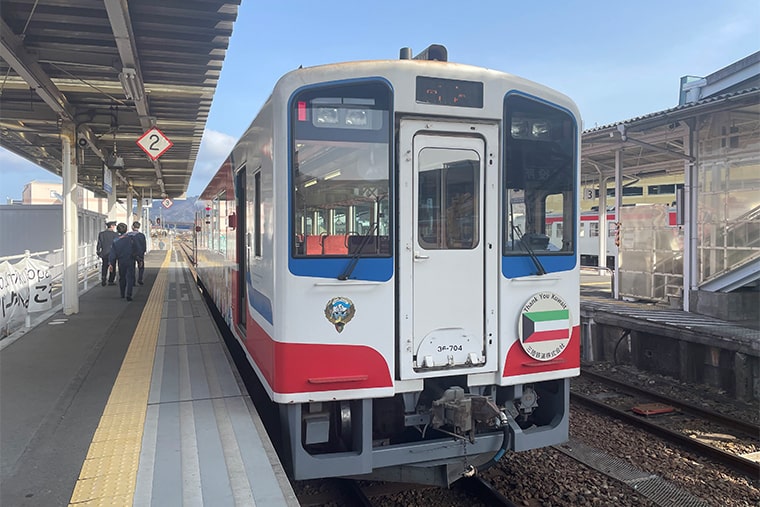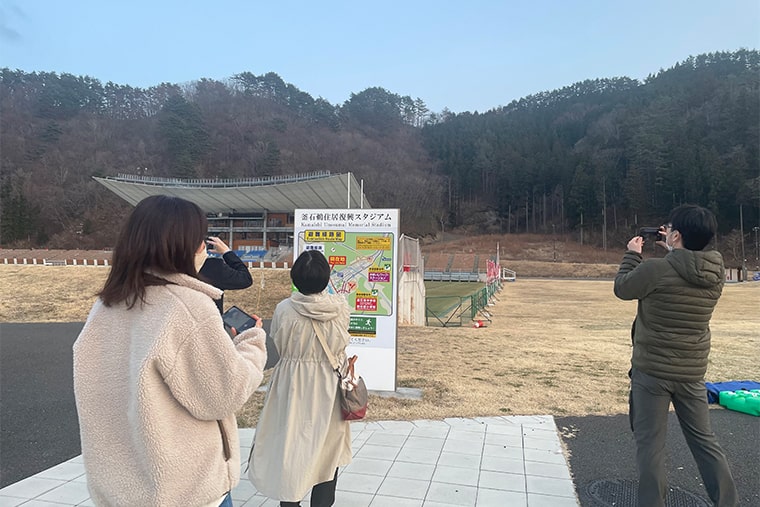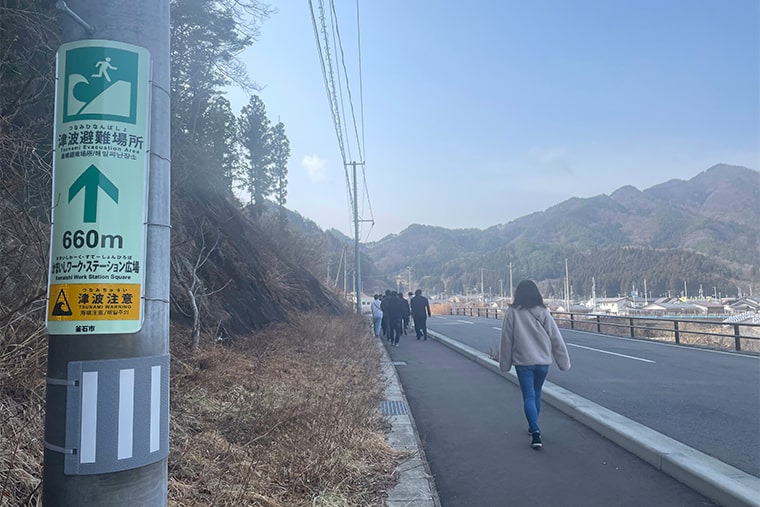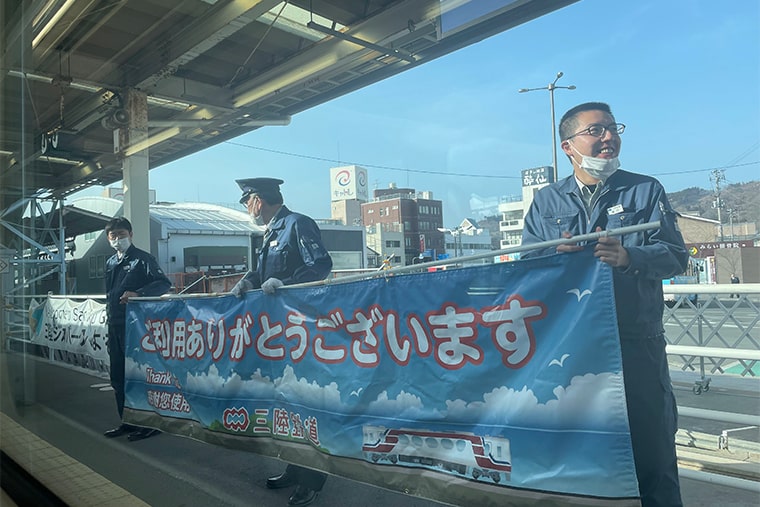「Remember 3.11」Bus tour in Iwate
HIS organized the "Iwate Bus Tour to Remember 3.11" on the 11th and 12th of March 2023, 12 years after the Great East Japan Earthquake.
In the tour, we chartered a Sanriku Railway earthquake learning train and listened to stories of the earthquake from Sanriku Railway employees and residents living along the train line.
Since its opening in 1984, the Sanriku Railway has supported the lives of the people in Iwate as "a railway indispensable to local life." Even after the earthquake, they believed that the restoration of the Sanriku Railway would be a hope for the region. Just five days after the earthquake, they started running through the town covered in rubble. Three years after the earthquake, the entire line resumed operation, and in March 2019, it was extended to 163km from Sakari Station to Kuji Station, becoming Japan's longest "Rias Line" as a third-sector railway.
We also visited Kamaishi Unosumai Memorial Stadium, which became a hot topic for hosting the 2019 Rugby World Cup. At the time of the earthquake, the former Unosumai Elementary School and Kamaishi Higashi Junior High School were located on this site. Both schools, which are located near the coast, were completely destroyed by a huge tsunami that overcame the school buildings.
Immediately after the earthquake, the children and students first moved to the evacuation shelter designated by the school, but then moved to a nursing care facility located on higher ground. At last, they evacuated to a stone shop located much higher. All the pupils and students who were in the school at the time were able to evacuate safely by making use of the results of their daily disaster prevention education and training, and by judging the situation on the spot. This series of evacuation actions is also known as a model for disaster prevention education at schools.
We visited Kamaishi Unosumai Memorial Stadium, which is a symbol of the reconstruction of Unosumai. In addition, walking through the evacuation route, we listened to the story of the time of the earthquake from Mr. Ito who is the representative of Sanriku Hitotsunagi Nature School.
The purpose is to give participants the opportunity to listen to, see and experience "memories that must not fade away" and "the present situation in Tohoku and Iwate". Through tourism, we hope to coexist with the local community and society, and to help expand the circle of reconstruction support, which is still continuing in various forms.
 Voices of the participants
Voices of the participants

・When I saw the local people waving at the train from outside, I felt that the Sanriku Railway had a special presence in the region.
I had mixed feelings about the fact that although the new breakwater after the earthquake was high, it made it difficult to see the beautiful scenery. I have not felt like this until actually visiting the site. (30s/Worker)
・After actually walking along the evacuation route, I was impressed by the efforts of the elementary and junior high school teachers and students to maintain their ability to live, and how well the locals communicated with each other. (60s/Worker)
・In front of the towering breakwater and crumbling remains of the disaster, I once again felt that the great earthquake 12 years ago had actually happened. While listening to the stories of the local people at that time, it was impressive that they all sent me a message saying, "Please take this incident as a lesson to protect your loved ones." I also want to pass on what I saw and heard on the tour to protect myself and my loved ones. (30s/Worker)
-

Sanriku Railway earthquake learning train -

Visit to Kamaishi Unosumai Memorial Stadium -

Evacuation route experience on the road where pupils and students evacuated
 Message from the planning staff
(Tsumura Natsuki / Study Tour Desk)
Message from the planning staff
(Tsumura Natsuki / Study Tour Desk)

★Why did you decide to organize this tour?
After 12 years, there is less media coverage, and fewer opportunities to think about the disaster, so I thought about what I could do and planned the tour that would allow people to know what the disaster was like and what Tohoku is like now.
Japan is inseparable from natural disasters such as earthquakes. I think that everyone living in Japan should take lessons from the Great East Japan Earthquake to prepare for the future. Therefore, by actually visiting and seeing the disaster area, and by learning not only the situation at that time but also the trajectory of the 12 years since the disaster and the efforts for the future, we can think about the earthquake as a personal matter. I hope this will give you an opportunity to learn and prepare.

Sanriku Railway welcoming us
★What did you learn after participating in the tour?
I went there on the day of March 11th, and it left an impression on me that no matter where I went, the locals said, "Thank you for coming.” As the days have passed since the disaster, the number of visitors has decreased, and I was afraid that the disaster would be forgotten. Also, as the guide said, there are more generations who do not know about the earthquake, so I thought it was important to think about the necessity of handing down the story and how to pass it on.

Sanriku Railway welcoming us

